Budgerigars, according to CSIRO Publishing’s The Australian Bird Guide, are always in flocks, sometimes of immense numbers.
That ain’t necessarily so, always!
On 18 October 2022, a whisker less than 200 kilometres north of Perth, we enjoyed an unexpected encounter with a pair of wild Budgerigars.
They were alone, together/ish.
The “/ish” is because they probably had offspring, safely invisible to us, nestled snugly within the tree hollow from which the female member of “our” pair only very occasionally and briefly emerged.
I have previously seen Budgerigars in the wild, but not for more than forty years.
Last week my beloved and I hugely enjoyed a day trip to the Wongan Hills area.
An easy drive, from and back to Perth – a little less than two hours, north, then the same, south – this region is spectacularly rich in endemic wildflowers, and is also a rewarding destination for bird lovers.
As you will see in a future post, on the morning of 18 October at Reynoldson Reserve we saw many beautiful and strange plants which naturally occur only in certain parts of southwest Western Australia.
(and as you may already have seen in the immediately preceding post, we also saw a very attractive “immigrant”)
Come lunchtime, we looked for something not so easy to find in the Wongan Hills area – a convenient, roadside-located, shade-giving, large tree.
We found one, pulled over, and began to enjoy lunch, under a big gum tree – one old enough to contain a bird-friendly hollow.
I’d barely begun to spill wet hummus and dry, crumbly felafel all over my shirt and hands, when our guide/driver excitedly exclaimed, “there’s a budgie up there!
As we soon discovered, our hero was not alone.
The blue colouring on his cere – the area around the nostrils – flagged his gender.
After a short flaunt on a branch high above us, he purposefully moved along it to the mouth of the hollow in the tree trunk…from which soon emerged another Budgerigar’s head.
Her gender and probable breeding status was flagged by her cere’s brown colour.
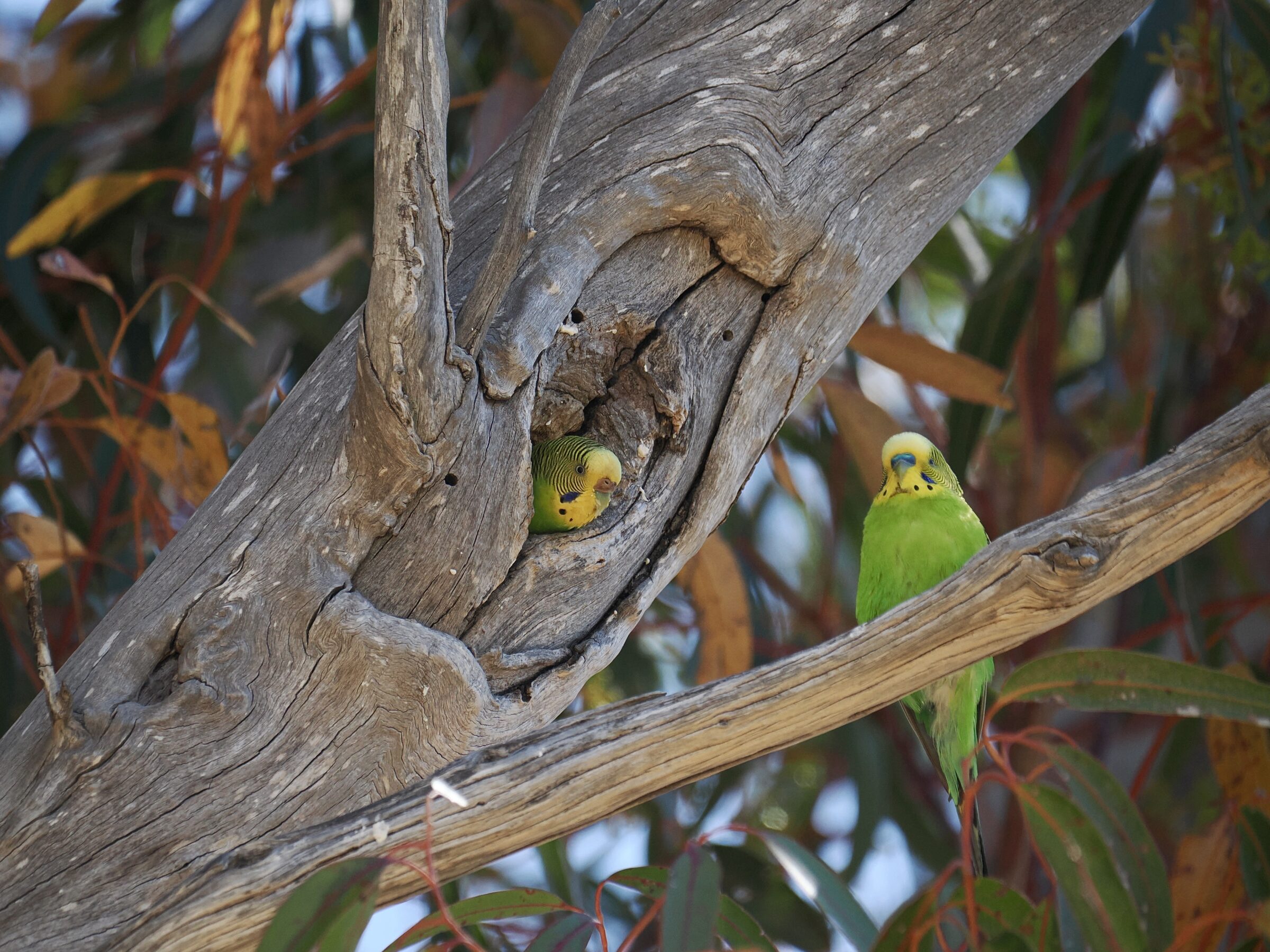
In such a “breeding pair” circumstance, the female mostly stays in the hollow.
She is fed by her mate, regurgitating; that is what is happening in the featured image, atop this post.
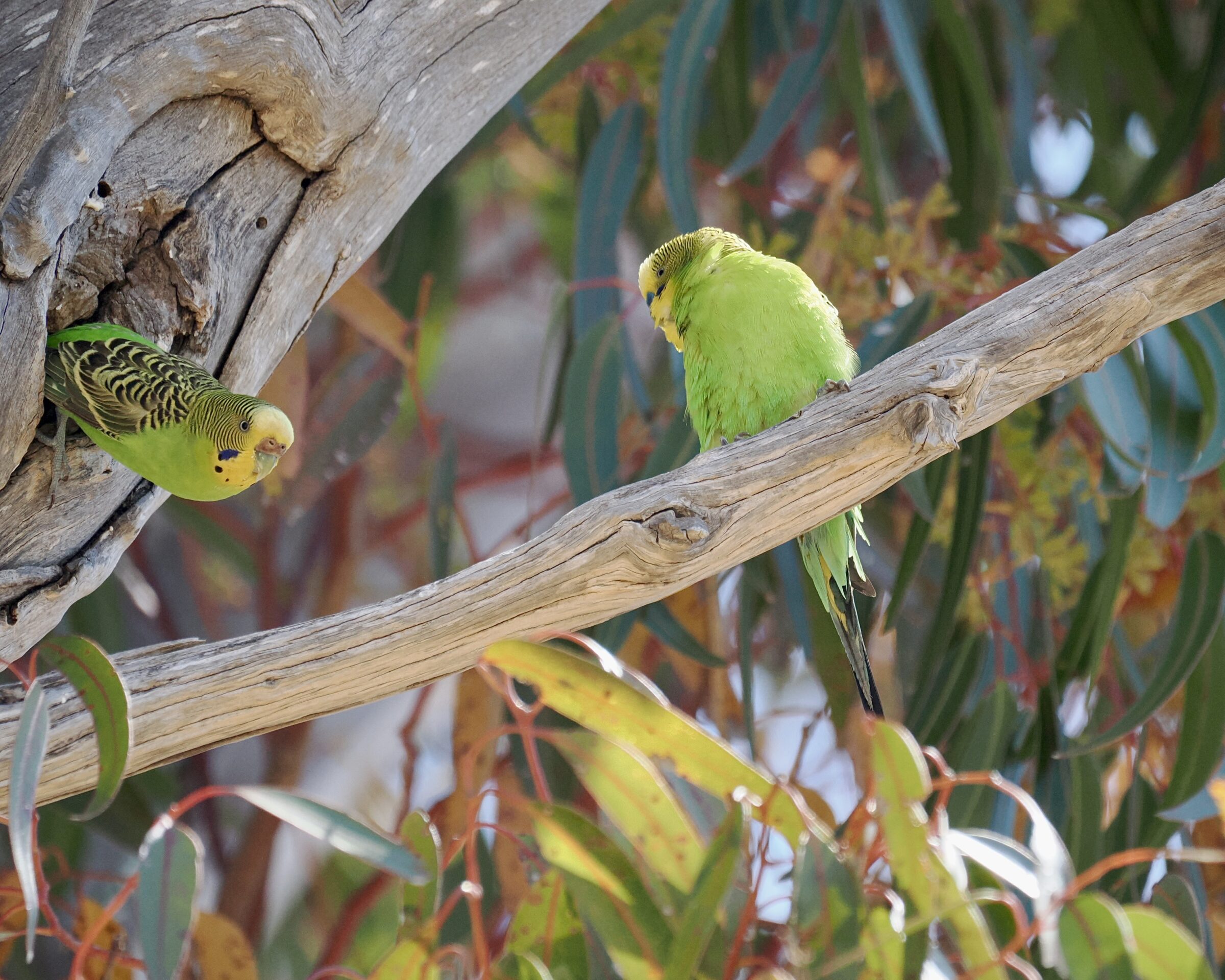
Occasionally, the female fully emerges from the hollow, usually for a wee bit of socialising and defecation.
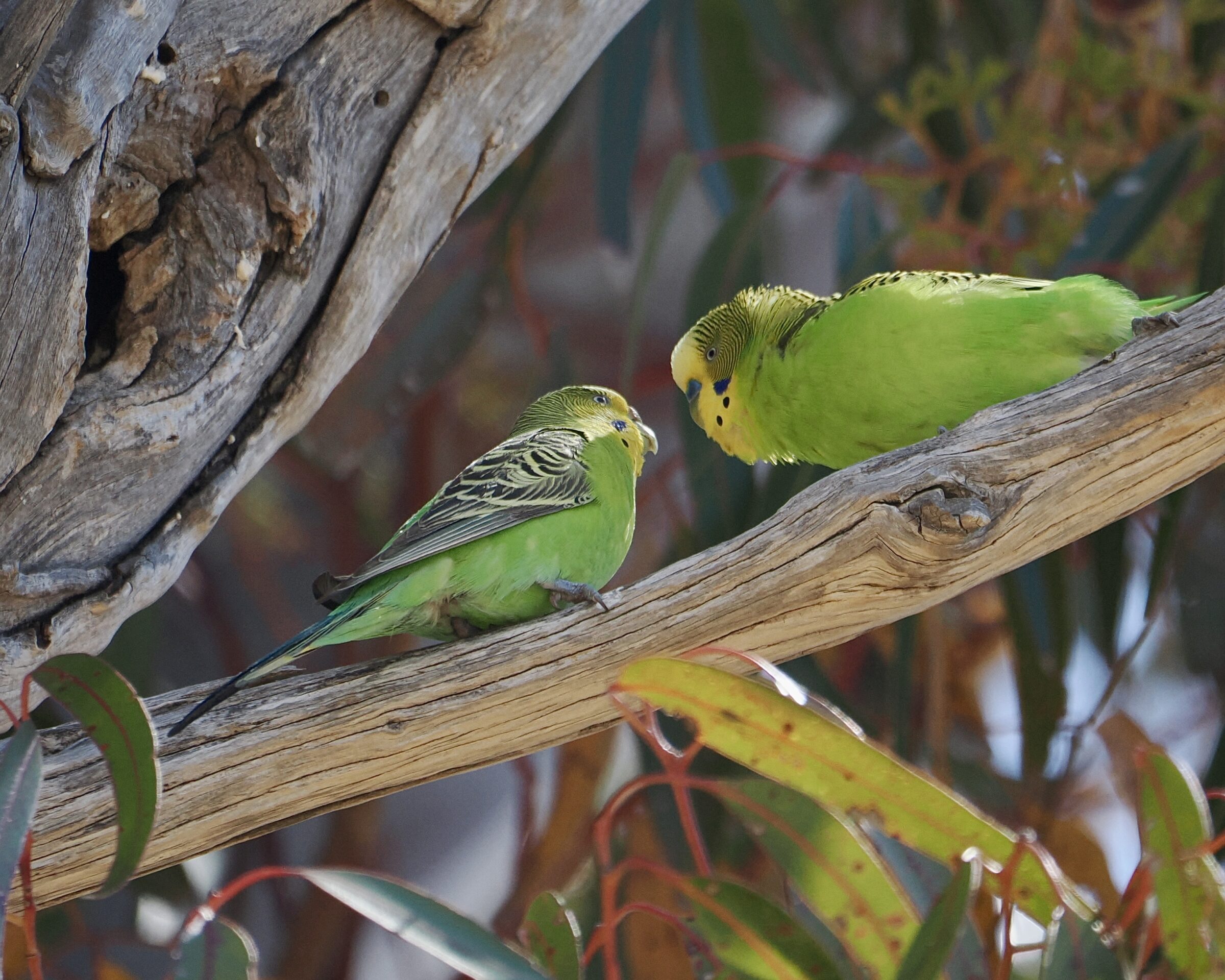
You can discover much more about Budgerigars via their really good Wikipedia entry.
Budgies are probably the world’s most popular non-mammalian pet; in the entire “human pets’ world”, Budgerigars are likely exceeded in absolute number only by dogs and cats.
Fundamentally, however, a bird in the bush is worth much more than one in any human’s hand…or home.
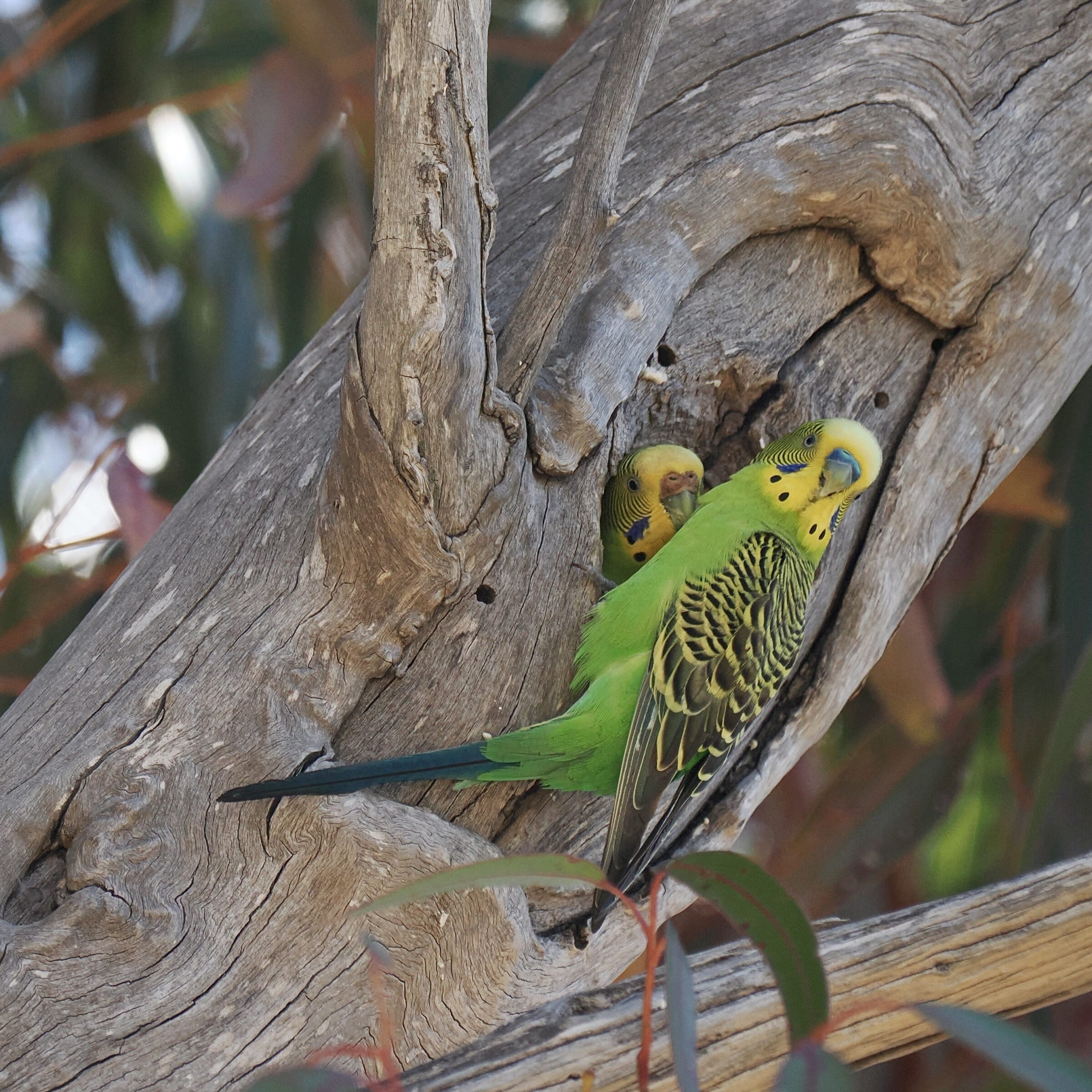
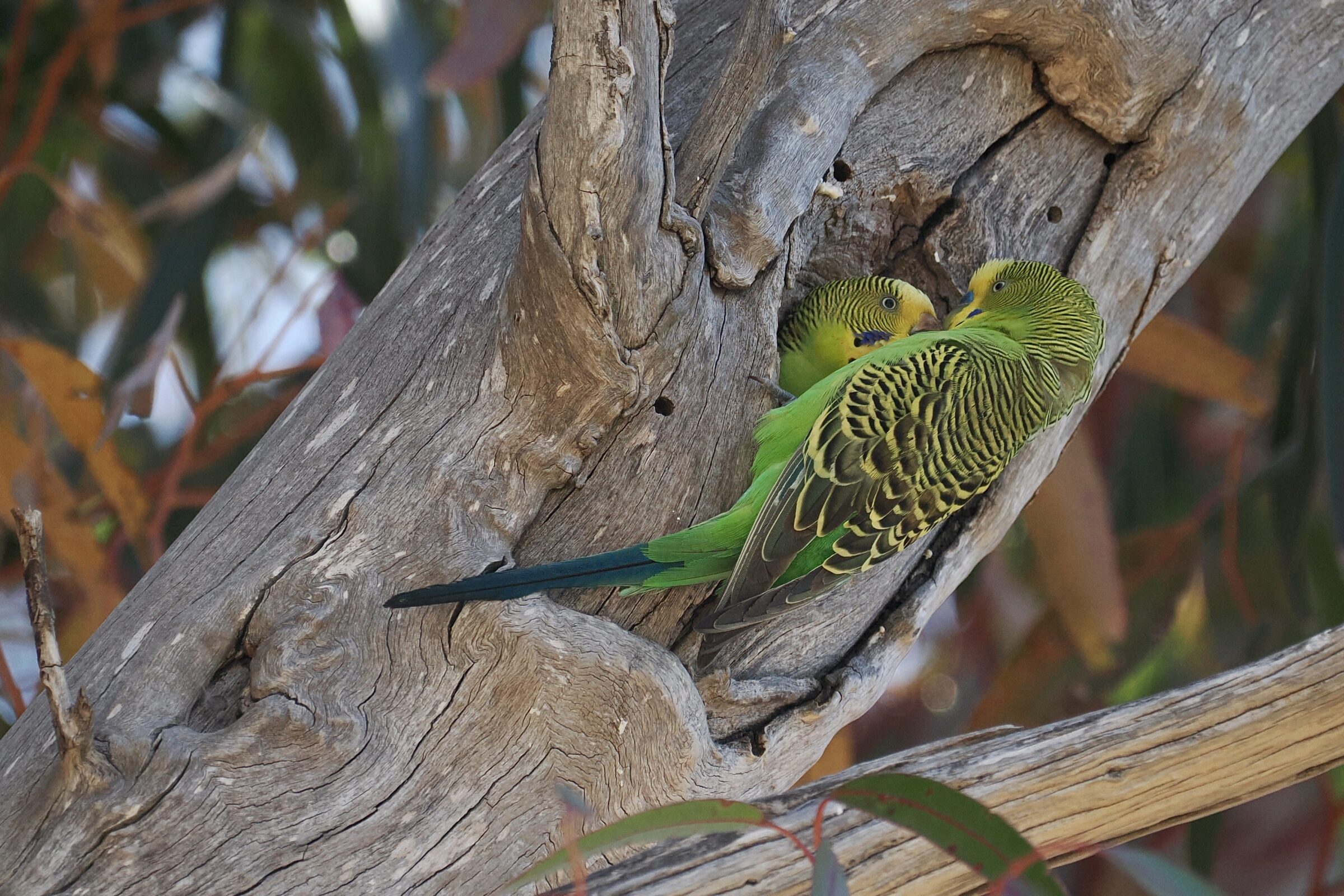
Subscribe
Subscribe